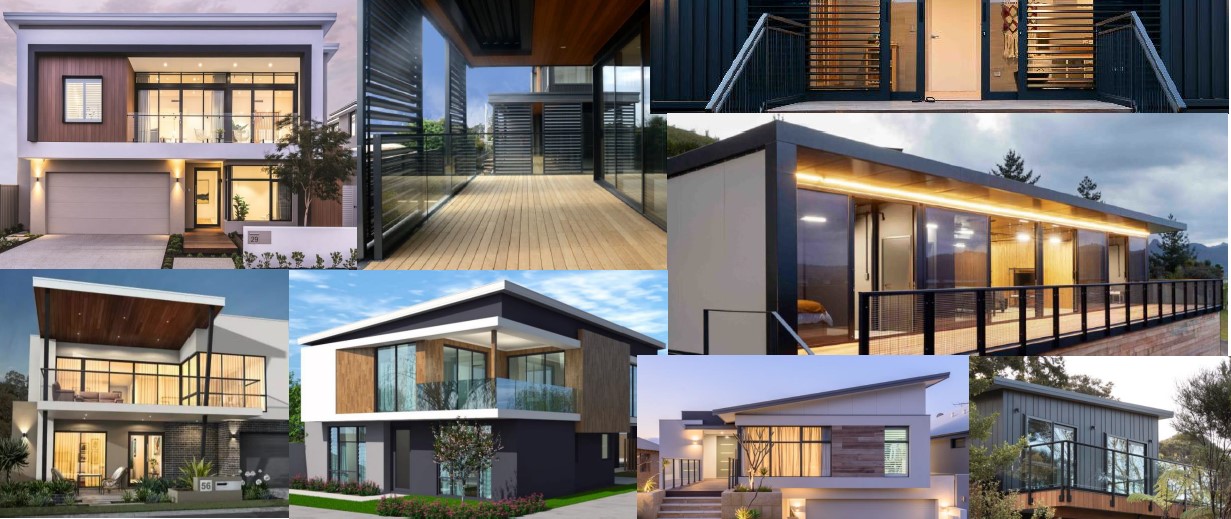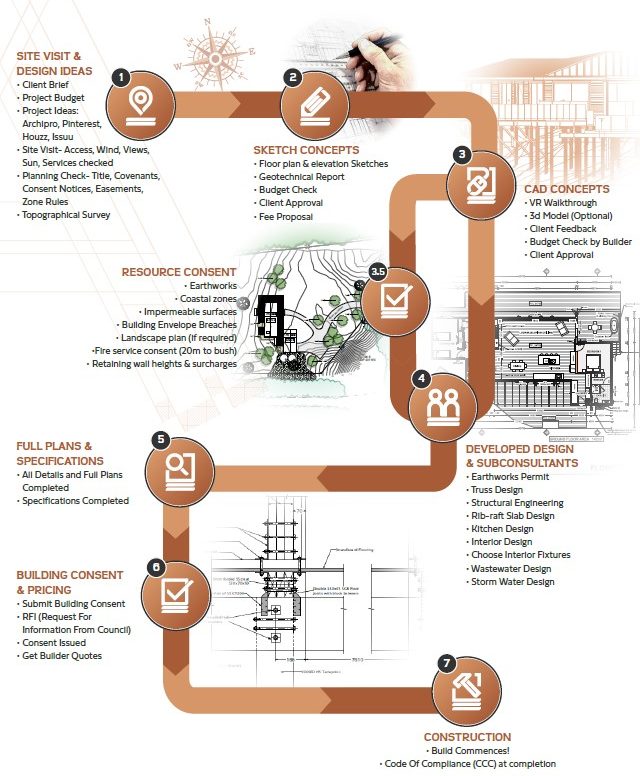So you’ve been thinking of building, but have got one big question to ask Google, so you’ve tapped in – ‘how to design a house’.
Thankfully, we’re professional house designers so you’ve landed in the right spot. Before engaging us, many of our clients have explored their own ideas, to help narrow down the options. Building a house is one of the biggest purchases you’ll ever make, so you want to take the time to research and understand the process and components.
See below our top tips and tricks if you’re wondering how to design a home.
1) Gathering Ideas (Crucial)
Before pulling out the notepad and placing rooms and furniture, just hold fire. Spend time to search through Pinterest, ArchiPro, Houzz and home magazines for ideas. Save them to a folder with comments on what you do or don’t like in the various designs.
Ask friends who’ve recently built. How did they design their house? What do they love, hate or wished they’d done differently? Document it all.
Don’t rush into downloading floor plans and trying to make them fit your site. Floor plans are great for layout ideas, however our belief is that you design the house to suit the site. Don’t get caught by thinking a floor plan layout is nice, when it doesn’t suit your site.

2) Spend Time At Your Build Site
Firstly, don’t design your house before you’ve got your building site. That’s like walking before crawling. Once your site is confirmed, then spend as much time as possible on it. Even camp on it, so you get a feel for where the sun rises and sets, prevailing winds, view lines and neighbors you wish to avoid seeing.
Spend time thinking about how you want the section to feel. For example, will you have a fire pit for entertaining, or a hot tub for relaxing? And how these external items on the site will interact with the interior of your home.
3) Begin With External Factors
Begin with paper and pencil. Start by outlining your site and noting the locations of external features outside of the site. Views, neighbors, winds, driveway access and trees to name a few. This gives a good basis to start positioning rooms within the house to suit these external factors.
Prioritise rooms from 1-10. Which deserves the best location? Where will you spend the most time? This helps decide their positioning. Don’t worry too much about the actual shape and look of the house just yet, that will form in time.


4) Place Rooms
Once you’ve got the external factors locked in, you can start placing rooms to suit these factors. Think about sunlight, views, shading, areas you want to block off entirely and rooms that are less important.
Our general rules are – Garage to the south and positioned to work with site access. Kitchen and Master Bedroom to the East to catch the morning sun. Living central & to the West. Outdoor areas to the West. Laundry accessible to clothesline. Other bedrooms and spaces fit around these.
These are not concrete rules, and room positioning is very site dependent. The most challenging sites have south facing views, making it difficult to place rooms to capture sun and views at the same time.
5) Start Forming An Outline
Then, begin to start shaping the house and thinking about what it will look like. Does its shape suit the land? Will it be an H shape, rectangular, triangular? What walls will you step in and out to create features, both inside and outside?
The key with an outline is cost. The longer the perimeter of the house, the more cladding, insulation, labour and paint there is. Length = Cost.
H shape and Pod style homes have the greatest external wall length. This often means you can save up to $50,000 on the build cost for the same square metres of floor area.
6) Exterior Size & Rooflines
When thinking about how to design a house, it’s easy to fall into the trap of what the home will look like from the outside, right from the beginning. Rooflines determine the overall look of a house, and they also have different costs associated with them.
Will it be a mono pitch roof? Gable? Hip? Separated or joined in parts?
Roof design can be difficult and tricky. Sometimes shifting some external walls a matter of millimetres can make a roof work, or not work. It is always wise to keep the question of ‘how will this be constructed’ in the back of your mind when designing a house.

7) What Next?
Now you’ve got your ideas on paper, it’s time to hire a professional. District Councils require CAD drawn plans with sign off from a Licenced Building Practitioner (LBP) to give you a Building Consent. So you need to decide, do I hire an Architect, Architectural Designer or Builder? (Read our blog here on this decision)
As much as you think you know what you’re doing by this stage, help from a professional is worth every cent. Making small changes in the design can save thousands of dollars during the build. Do not, ever, think you know it all. Even we can’t claim that! Building a home has so many factors and trying to cut corners will never end up worthwhile.
8) How To Design A House – Is There An Easier Way?
For sure. Designing homes is why we exist. Our Team works with hundreds of projects per year, and every single project we learn something new. So you can appreciate the level of knowledge designers have about every corner of a project.
We love designing homes. And we’d love to help you to design yours.
We’ll field the tricky questions, the details, the confusing specifications. It would be fair to say that after designing several thousand homes (we do several hundred every year) we know how to design a house.

